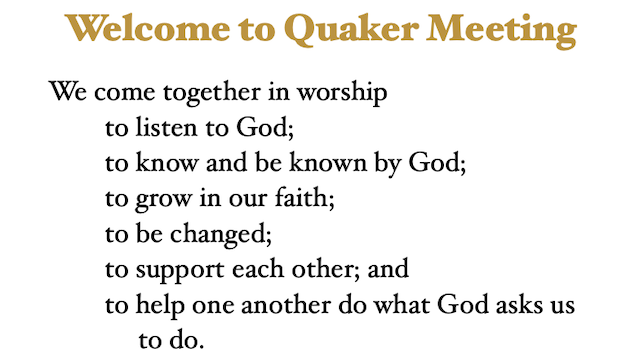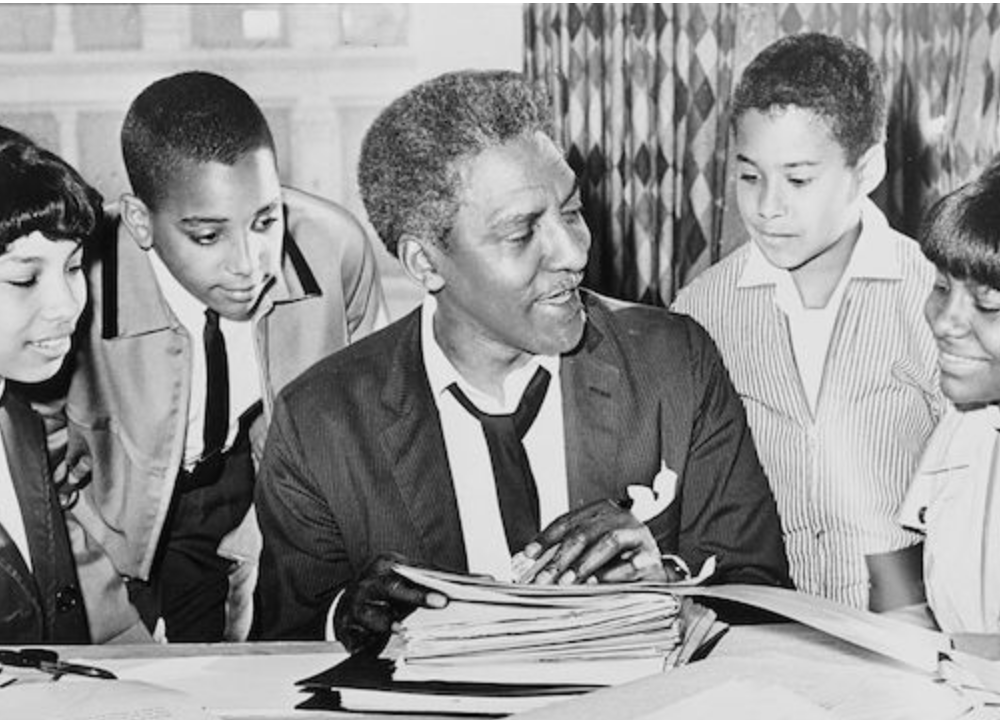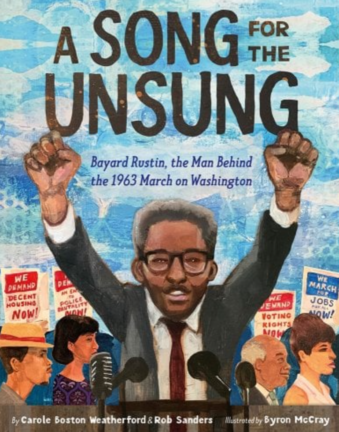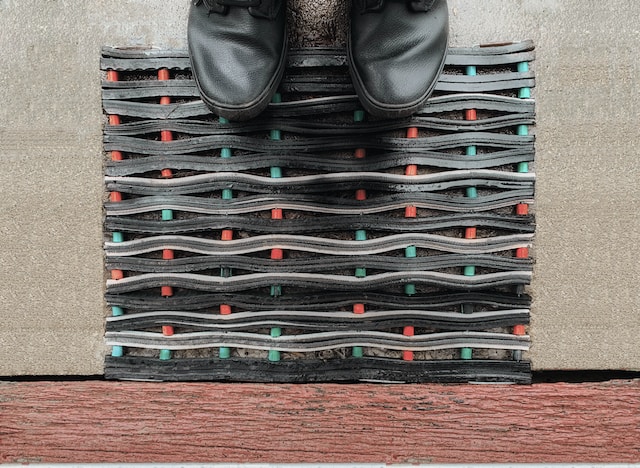Bucks Quarterly Meeting “Welcome to Meeting” cards: Example
For more information about these cards, which are tailored for each meeting, please reach out to the Bucks QM Coordinator, Wendy Kane: quakersbucks@gmail.com
Written on:

For more information about these cards, which are tailored for each meeting, please reach out to the Bucks QM Coordinator, Wendy Kane: quakersbucks@gmail.com
Written on:

The resources below provide an opportunity to lift up Black voices and explore anti-racism with the young people in our care. Much has been written about the inclusion of Black History in mainstream education and how to teach this history both in terms of the Black American experience and children’s developmental levels. Some of the links to articles and resources below reflect these discussions and may be useful to consider in a religious education context.
Whether in a program for children at meeting or at home, the work needs to begin with adults deepening our own understanding of the history and its the broader context, and clarifying our goals in presenting information and images.
“Carter Godwin Woodson, teacher, principal and supervisor of schools, established Negro History Week, which evolved into Black History Month following the Black Consciousness Movement of the1960s. African American History Month is a reminder to all of us to continue Carter G. Woodson’s commitment — to bring greater regard for the contributions of African Americans to this country, to understand and overcome a legacy of oppression and racism, and, in so doing, to further racial harmony among us all.” – from “The History Behind Black History Month” by Joan Novelli in Learning for Justice

Additional resources for parents and other adults teaching and caring for BIPOC and white children can be found in Talking About Racial Injustice with Children.
Featured image: New York World-Telegram and the Sun staff photographer, Public domain, via Wikimedia Commons
Written on:

Written on:

Written on:
You Are Welcome Here! adaptable template coloring page and meeting information for children and families
Written on:

Three sets of needs
When a family walks through the door of a meeting, there are three sets of needs we should be prepared to support: the spiritual formation of their children, the spiritual journey of the adults as individual seekers drawn to Quakerism, and the family unit as they search for a spiritual community for their family to grow and contribute in. Welcoming a new family is the work of the whole meeting — youth religious education, worship and ministry, care of community, etc. Pastoral care for children begins with pastoral care for their parents or primary caregivers, and this care is best served at an intersection of multiple committees and ministries. Along with welcome and inclusion, child safety (which is really community safety) is another place for the meeting community to work together to address resources and practices. When my meeting wrote our child safety policy, the ad hoc committee included members of children’s religious education, worship and ministry, and the meeting clerk, who worked together to bring forward a policy for the whole meeting to approve as a body. There is a powerful message in the shared nature of that work.
Listen
When we welcome a family at the meetinghouse threshold, we need to be prepared to reach out and communicate about what they will find there. We also need to be ready to listen. What is a family looking for in a faith community? What do they want you to know about their children, their hopes and needs? After we listen, are we willing to create flexible structure and routines in programs for families to participate? How can we make space for Friends with a variety of gifts to participate in our spiritual community?
I had a humbling experience that lifted up the need to listen, as well as to share about Quakerism and our meeting: In a year when we had many new attenders, we decided to have a shared lunch to invite them more fully into the life and work of the meeting. We prepared a handout about committees, there was an agenda and program (and childcare and pizza for children!). The program opened with the simple request to go around the room and share what had brought each of us to our meeting? Where were we on our spiritual journey? I thought we would do introductions and then get to the “real work” of sharing about our committees and how newcomers could participate. Ninety minutes or so later, we had gotten around the circle of people present. We didn’t get to anything else we had planned. The real work of that time together was sharing, listening, and gathering as a spiritual community. The time for finding a place for people to serve would happen, but we needed to know each other better, first. Integrating families and other newcomers into the spiritual life of the meeting doesn’t need a committee. It’s just about placing primacy on the spiritual experience of worship, listening deeply to one another, and walking with one another in the travail and celebrations of life. People want to share their stories as they come to walk with us. Are we listening?
The unspoken messages of spaces
When my children were very young, I spent most of hospitality hovering over them on antique horsehair furniture where they balanced with glasses of juice and china plates of cookies. I rarely had an adult conversation of any depth, during a time when wonderful connection can happen — and when I needed it. It finally occurred to me to ask if we could add to the social room a small table and chairs for children. The result was transformative! People who are parents can get their children set up there, and then spend coffee hour talking to other adults. The other happy outcome? Children in fellowship with their peers, knowing one another in community outside of a program or worship. Spaces give unspoken, immediate clues to a new family about how prepared the meeting is to welcome them: is there a place to change a diaper? a booster seat or highchair? a small table and chairs in a fellowship space? Does the worship space have a basket of books, coloring, and other quiet things to support children be settled — and included — in worship? Does the greeter have information about child care and youth religious education programs, to hand to visitors along with announcements or information about the meeting? None of these things need to be fancy, but they send a powerful message of inclusion.
Author: Melinda Wenner Bradley
http://www.pym.org/resources/wp-content/uploads/sites/106/2021/06/Families-At-the-Threshold-2021.pdf
Update your contact & Meeting information at pym.org/updates
Philadelphia Yearly Meeting
1515 Cherry St
Philadelphia, PA 19102
info@pym.org
215-241-7238
215-241-7045 (FAX)
Contact Us
The latest news, events and program updates from Philadelphia Yearly Meeting.
© 2025 Philadelphia Yearly Meeting · Privacy Policy